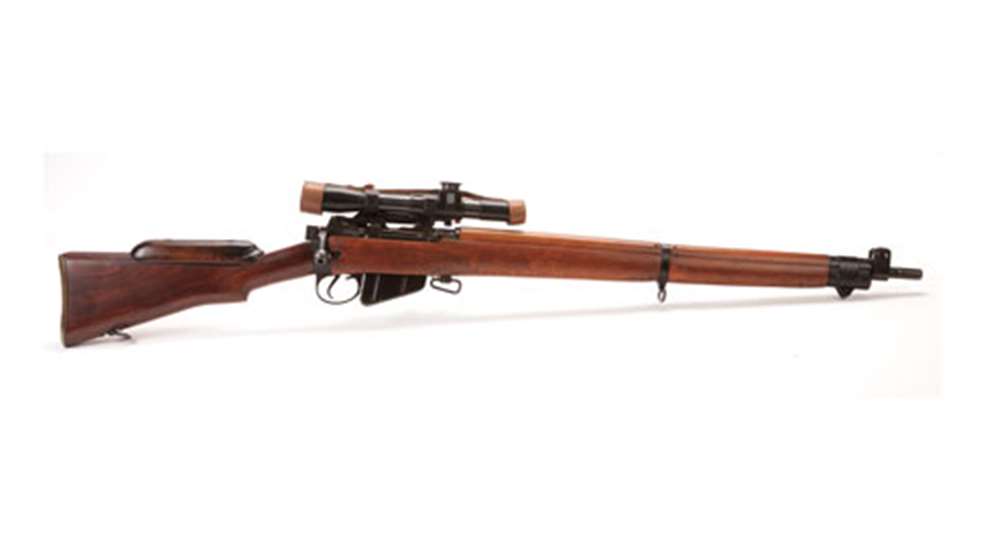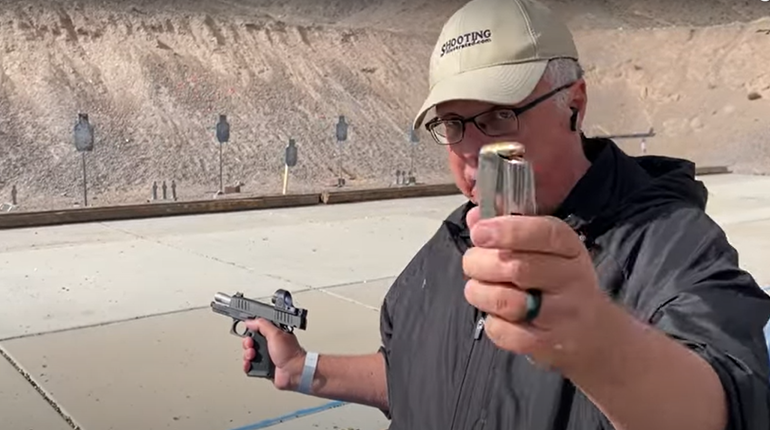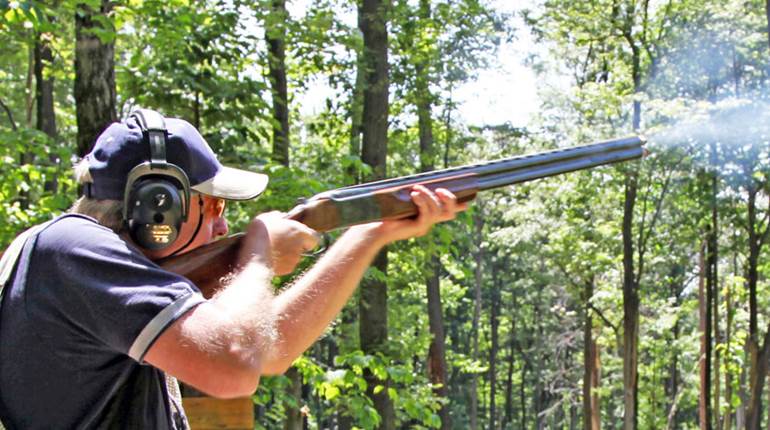
The British Army was poorly equipped with sniper rifles when World War II began. Britain had finished World War I with a quartermaster’s nightmare of different offset-mounted Short, Magazine Lee-Enfield (SMLE) sniper rifles in the field, and was only beginning to introduce the deadly accurate Pattern 14 with its overhead-mounted Pattern 18 scope when the war ended.
Just more than 2,000 P’14 snipers were ever made and there were far fewer than that number on hand in Britain when war came again, with many rifles having been sold off to equip Commonwealth countries, including Australia, New Zealand, South Africa and India. The British had nothing much else on hand in the way of sniping equipment, and there was little that could be done in the short term about supplying new sniper rifles.
Enter The No. 4(T)
Work had been done in the years following World War I to modernize the design of the SMLE and make it more suitable for mass production. The rifle that resulted from that work, the No. 4 Lee-Enfield, was being rushed into production in 1941, but rifles were slow to come off the line.
Between September 1940 and March 1941 a telescopic mounting bracket was devised and an initial specification for the No. 4(T) determined. The No. 32 sight was intended to be mounted on the left side of the Bren light machine gun’s receiver, which is why the windage adjustment knob is on the left side of the scope rather than right.
Even though a specification had been determined, No. 4 rifles were still in short supply at that time as production was still in its early stages. To help progress on the sniper rifle project, some 1,400 early trials rifles were utilized for conversion at Enfield.
According to official records, the No. 4(T) was first available for issue on Feb. 12, 1942, but a number of the Enfield converted trials rifles were apparently issued to some Commando units earlier than that.
Well-known British gunmaking firm Holland & Holland was awarded a contract to convert 12,100 rifles to No. 4(T) specification on Sept. 22, 1942, and the first rifle was completed on Nov. 17 that year. Eventually, 23,187 No. 4(T)s were converted by Holland & Holland.
Rifles were selected for conversion to No. 4(T) specification after demonstrating superior accuracy during group testing at the factory. Rifles having passed this test were marked “TR” on the left side of the butt socket and sent to H&H.
At H&H’s premises the rifles were further checked to see that they complied with other specifications including five-groove barrel, split foresight block band and the early Mk I back sight. Those that passed were stripped down prior to the scope mounting pads being fitted to the left side of the receiver. The battlesight aperture of the standard rear sight had to be removed to allow clearance for the scope. After the fitting of the scope mounts, the rifles were very carefully reassembled with particular attention being paid to the fitting of the fore-end. The scope and rifle became a matched pair for their respective service lives with the serial number of the scope being stamped on the small of the rifle’s butt.
Each No. 4(T) rifle (with the exception of some early Enfield conversions) was fitted with a wooden cheekpiece that was attached to the butt with two screws. Its purpose was to enhance the shooter’s cheek weld with the stock and allow more consistent aiming and follow through. The scope sits a fair way above the bore on a No. 4(T) making the addition of the cheekpiece a very practical innovation.
The No. 32 Scope
The No. 32 scopes are a complete area of study all on their own, but basically, they consist of Mk I, Mk II and Mk III variants. The Mk I had a sliding sunshade fitted over the rear lens and was adjustable in 50-yard increments for range and two minute-of-angle (m.o.a.) clicks for windage. The Mk I scopes did not stand up very well to the rigors of a hot climate, such as those encountered in the Western Desert campaign.
The No. 32 Mk II telescope was introduced on April 23, 1943. It, too, had a sliding sunshade but was recalibrated so that one click for either “range” (elevation) or “deflection” (windage) was equivalent to one m.o.a. Several changes were made to the scope’s internal components to enhance reliability.
The No. 32 Mk III telescope was introduced on Oct. 7, 1944, and rectified most of the remaining shortcomings of the earlier scopes. Not only was it cheaper and easier to produce than the earlier versions, it was even more robust and far easier to use. Such was its quality that the Mk III telescope served the British Army until well into the 1990s, converted to a metric range scale and re-designated the L1A1 atop the 7.62x51 mm NATO L42A1, which was itself a conversion based on the No. 4(T).
Into Action
The No. 4(T) was a particular favorite of Capt. Clifford Shore, author of the book “With British Snipers to the Reich,” in which he described the rifle as “capable of deadly, accurate work.” One unusual encounter described by Capt. Shore shows both the difficulty of range estimation that faced snipers in those pre-laser rangefinder days and the effectiveness of the No. 4(T) rifle.
Not long after D-Day, just outside the French city of Caen, two British snipers had crawled out to relieve two of their comrades in an observation post. Just after the two new men had taken up their position they whistled for the soldiers they had relieved to come back. Fresh eyes had just spotted a long sought German observer who was suspected of directing mortar fire onto the British.
According to Shore, “A whispered conversation between the four snipers followed as to the range to the German observer; they could not agree. Two of them said they estimated the range to be 250 to 300 yards; the others said it was nearer 350 yards. The matter was settled in a rather novel manner. Three of the snipers set their sights at 250, 300 and 350 yards, whilst the fourth man took the binoculars and kept them riveted on the prospective target. When satisfied that he was in the area of the observer he coolly gave the three men a fire order; the three rifles ‘spoke as one’ and the Bosche came somersaulting to the ground.”
The No. 4(T) was, “Just the thing for putting round holes in square heads,” according to Capt. Shore. Such a remark would raise eyebrows today and is certainly not “politically correct,” but is entirely understandable when viewed in the context in which it was made during World War II.
Many argue that the No. 4(T) was the best sniper rifle fielded by any of the combatant nations in World War II, and it may well have been. It was a tough and accurate rifle, but was not without its faults. The complaint most often made about the No. 4(T) by those who had to use it was its weight. Today, a good, matched No. 4(T) in a transit chest with its accessories is a highly coveted collectors’ item—one that any serious collector of sniper rifles would be proud to own.






































